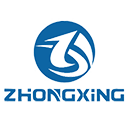Medical gauze is a staple in healthcare settings and first aid kits, serving a variety of purposes in wound care. It is a lightweight, absorbent fabric that is commonly used to cover and protect wounds, absorb exudate, and support healing. Understanding the different types of medical gauze can help healthcare providers, caregivers, and patients choose the best option for their specific needs. Here, we will explore the various types of medical gauze and their unique features and applications.
1. Woven Gauze
Woven gauze is one of the most commonly used types of medical gauze. It is made from cotton threads woven together in a crisscross pattern, creating a strong and durable fabric. Woven gauze is available in different sizes, ply (thickness), and thread counts, allowing for customization based on the wound’s requirements.
- Advantages: Woven gauze is highly absorbent, making it suitable for wounds with moderate to heavy exudate. Its woven structure allows air to circulate, promoting a healthy wound environment. It can also be used for wound packing, cleaning, and dressing.
- Disadvantages: One drawback of woven gauze is that it can leave fibers in the wound, which may cause irritation or delay healing. It can also adhere to the wound bed, making dressing changes painful and potentially damaging new tissue growth.
2. Non-Woven Gauze
Non-woven gauze is made from synthetic fibers, such as polyester or rayon, bonded together rather than woven. This type of gauze is typically softer and more pliable than woven gauze, and it does not shed fibers as easily.
- Advantages: Non-woven gauze is less likely to adhere to wounds, reducing the risk of trauma during dressing changes. It is also highly absorbent and can hold more exudate than woven gauze of the same thickness. Non-woven gauze is ideal for sensitive skin and wounds that require gentle handling.
- Disadvantages: Non-woven gauze is generally more expensive than woven gauze, which can be a consideration for long-term wound care.
3. Impregnated Gauze
Impregnated gauze is a type of gauze that has been coated or saturated with a therapeutic substance, such as petroleum jelly, iodine, or antimicrobial agents. These dressings are designed to provide additional benefits beyond the standard protection and absorption offered by plain gauze.
- Advantages: Impregnated gauze can help maintain a moist wound environment, which is beneficial for healing. The added substances can provide antimicrobial protection, reduce pain, and prevent the gauze from sticking to the wound. This type of gauze is especially useful for burns, ulcers, and wounds that are prone to infection.
- Disadvantages: The primary downside of impregnated gauze is the cost, as it is typically more expensive than standard gauze dressings. Additionally, some patients may have sensitivities or allergies to the substances used in the impregnation.
4. Sterile Gauze
Sterile gauze is packaged in a way that keeps it free from bacteria and other contaminants. It is crucial in situations where infection control is a priority, such as surgical procedures, open wounds, and burns.
- Advantages: Sterile gauze reduces the risk of infection, making it ideal for use on open wounds and during surgical procedures. It is available in both woven and non-woven varieties, providing flexibility in its use.
- Disadvantages: The main disadvantage of sterile gauze is the cost, as it is more expensive than non-sterile gauze. It is also typically packaged individually or in small quantities, which can be less convenient for some users.
5. Non-Sterile Gauze
Non-sterile gauze is not treated to be free of bacteria and is generally used for purposes where sterility is not required, such as cleaning, padding, or protecting intact skin.
- Advantages: Non-sterile gauze is more affordable and readily available than sterile gauze, making it suitable for general use in first aid kits and home care settings.
- Disadvantages: Because it is not sterile, this type of gauze should not be used on open wounds or in surgical settings to avoid the risk of infection.
6. Gauze Sponges
Gauze sponges are squares of gauze that are pre-folded and layered to increase absorbency. They are commonly used in medical procedures, wound care, and as part of surgical dressings.
- Advantages: Gauze sponges are convenient and versatile, offering a ready-to-use option for wound cleaning, padding, and dressing. Their layered design increases absorbency, making them effective for wounds with moderate to heavy exudate.
- Disadvantages: Like woven gauze, gauze sponges can shed fibers and may adhere to wounds, which can cause discomfort and damage during removal.
Conclusion
Choosing the right type of medical gauze is essential for effective wound care and patient comfort. Woven and non-woven gauze are versatile options for general use, while impregnated gauze provides additional therapeutic benefits. Sterile gauze is crucial for infection control, while non-sterile gauze is suitable for non-critical applications. Gauze sponges offer added absorbency for wounds with heavier exudate. Understanding the different types of gauze and their uses can help you make informed decisions in wound management and ensure optimal healing outcomes.
Post time: 8月-26-2024






